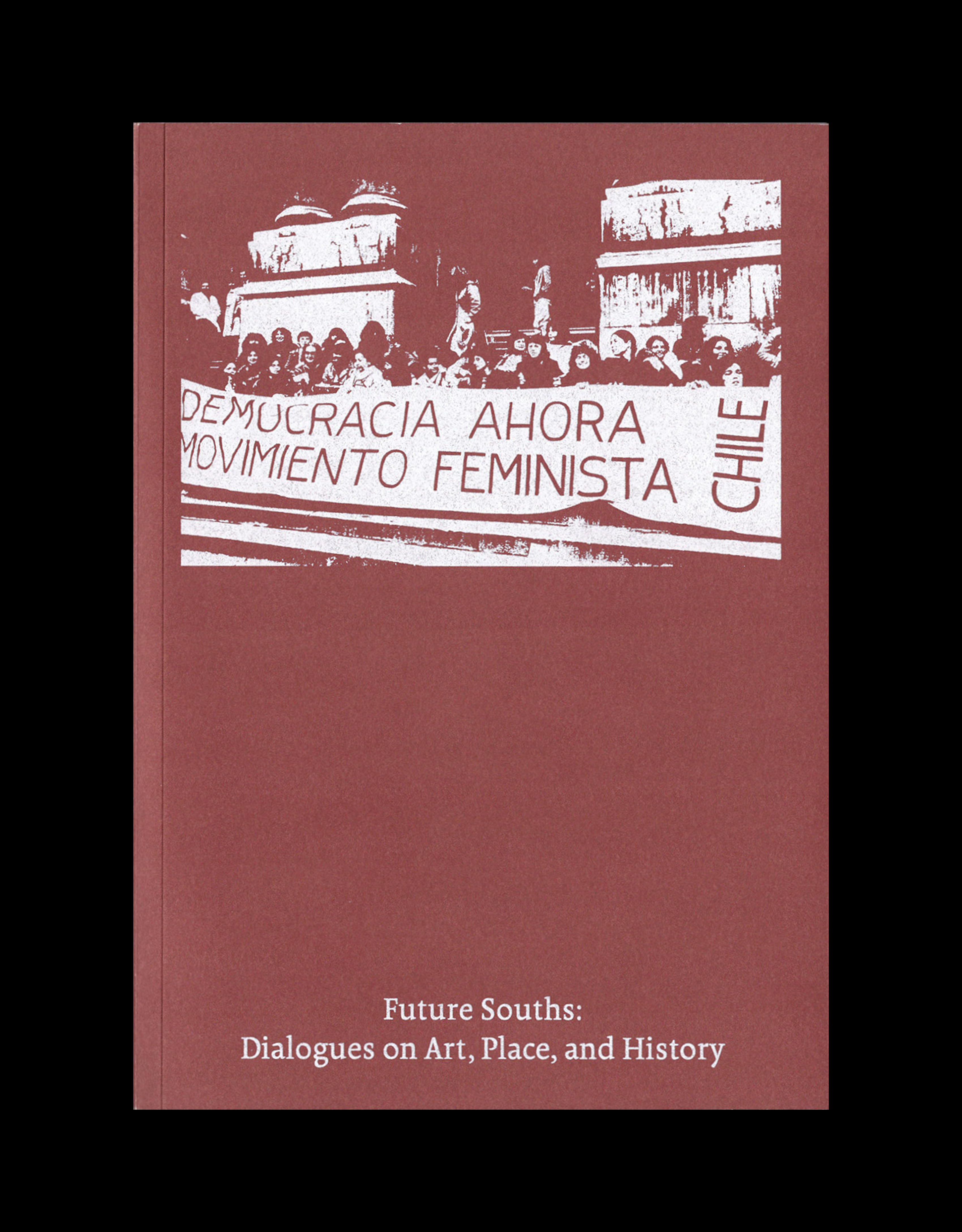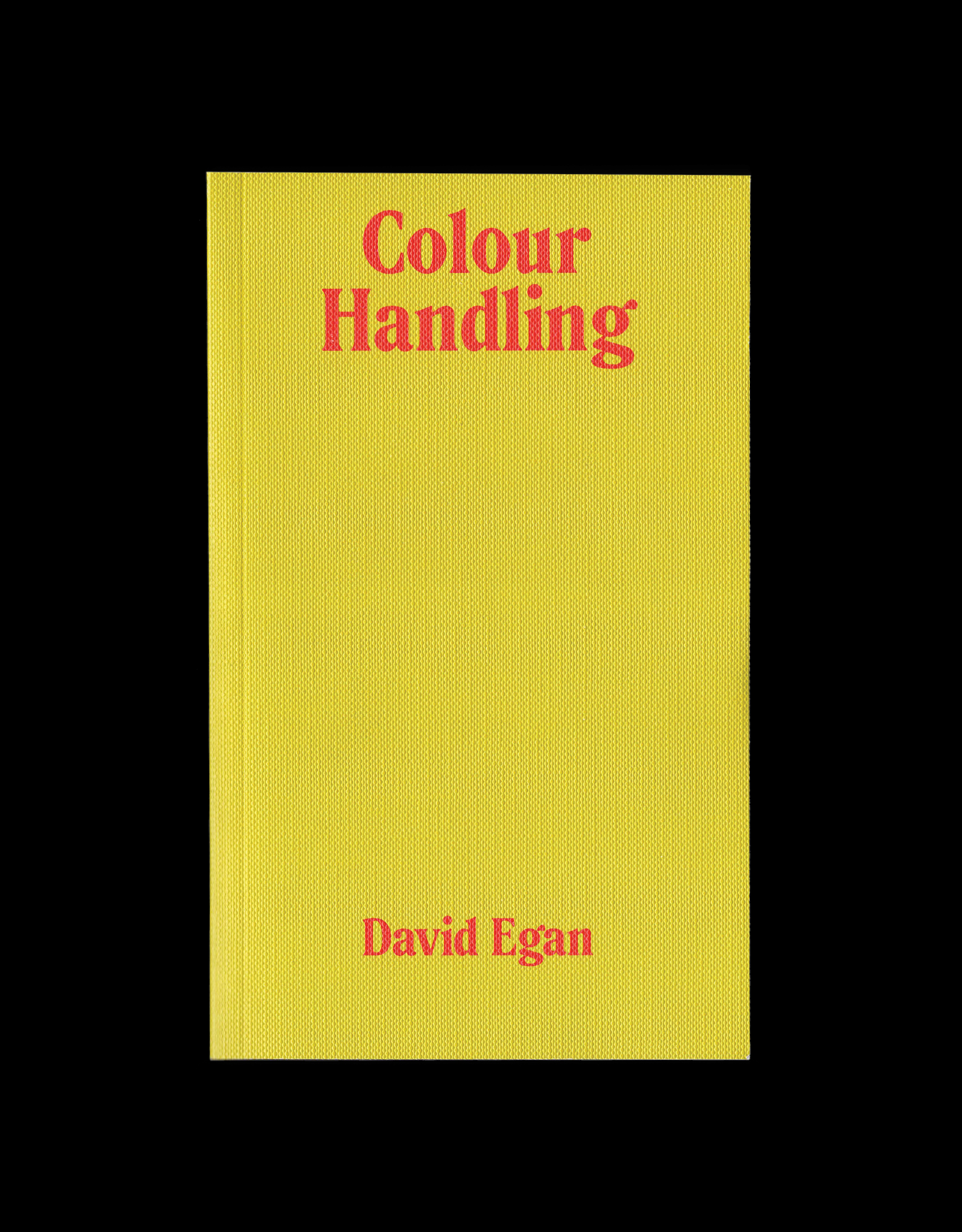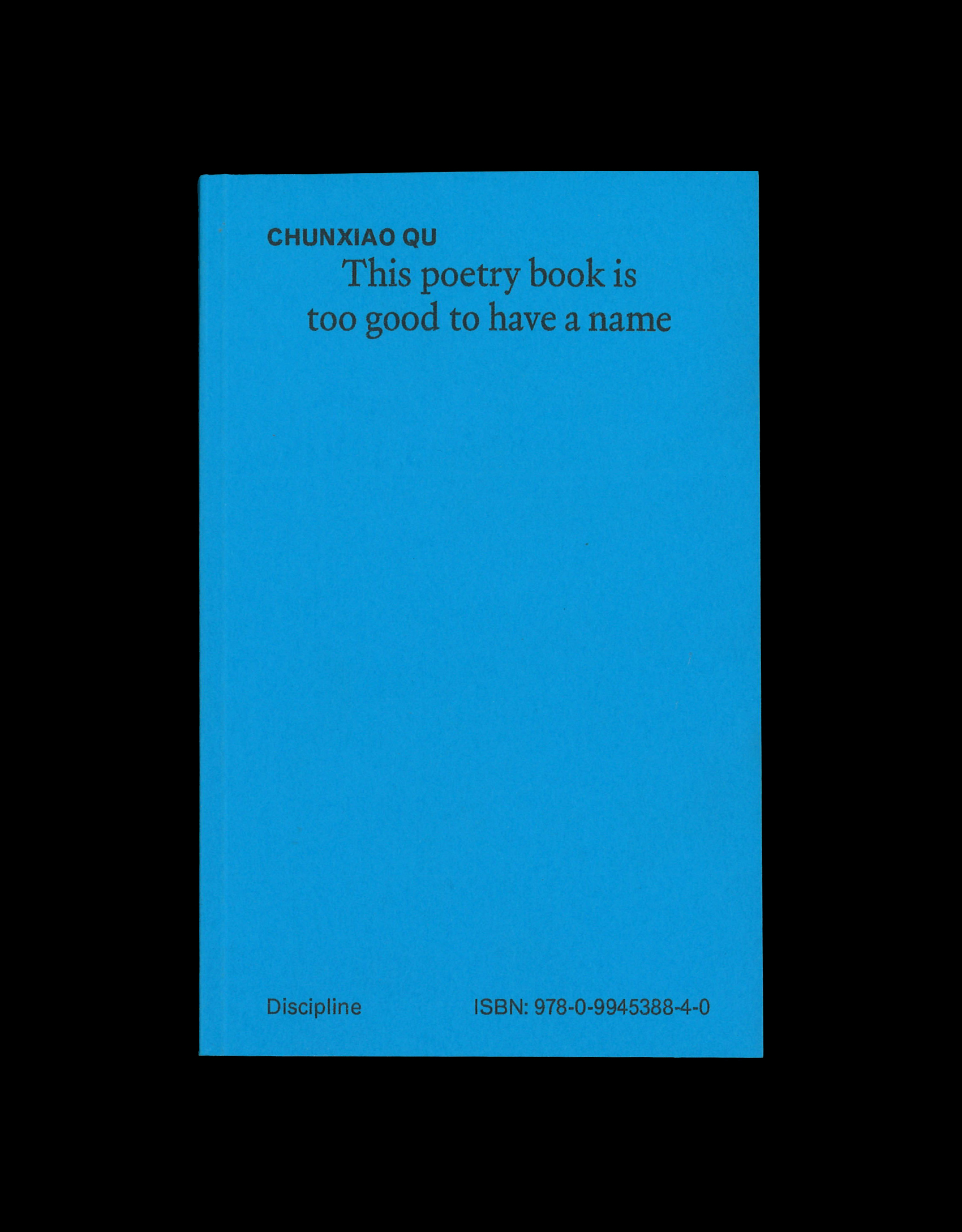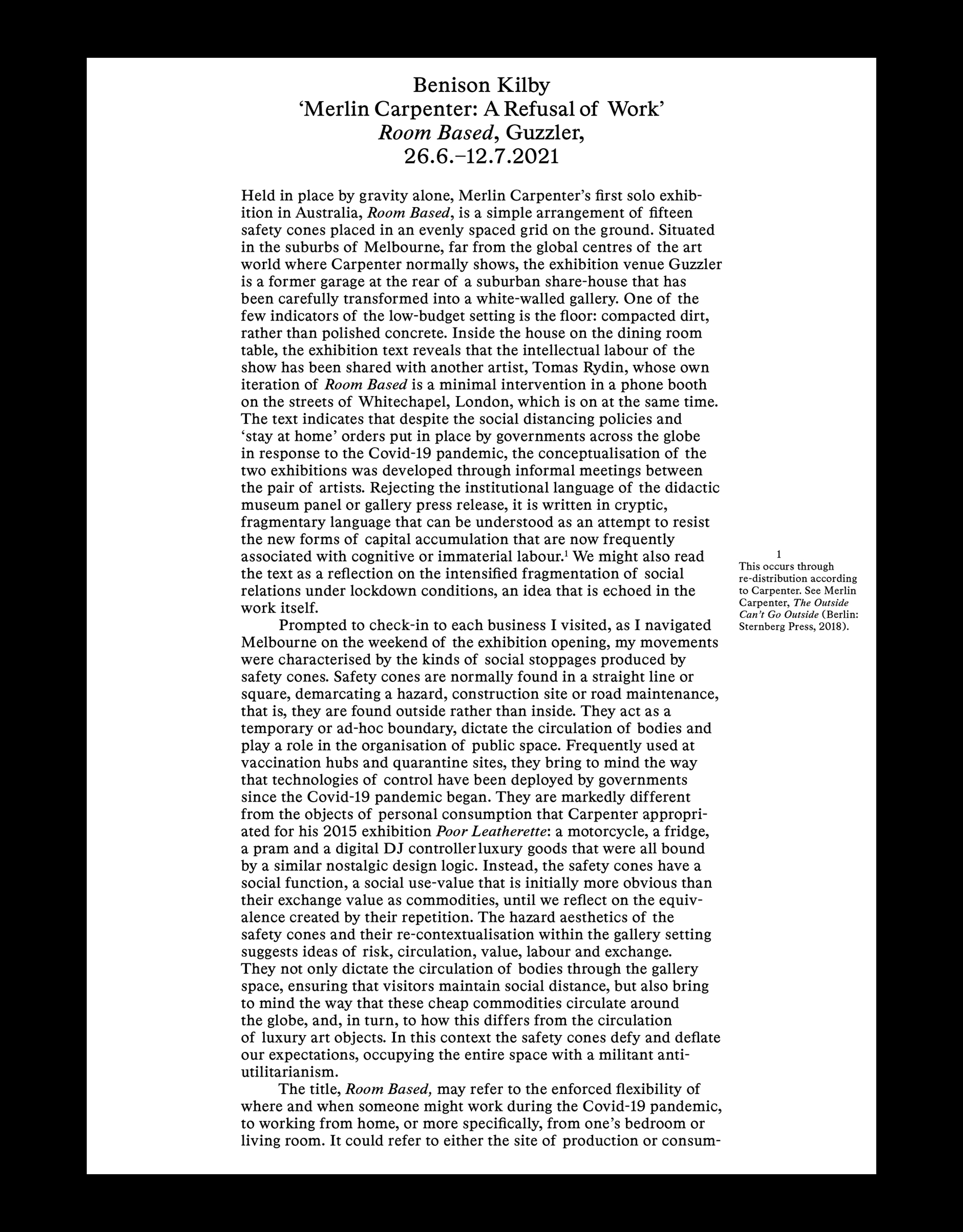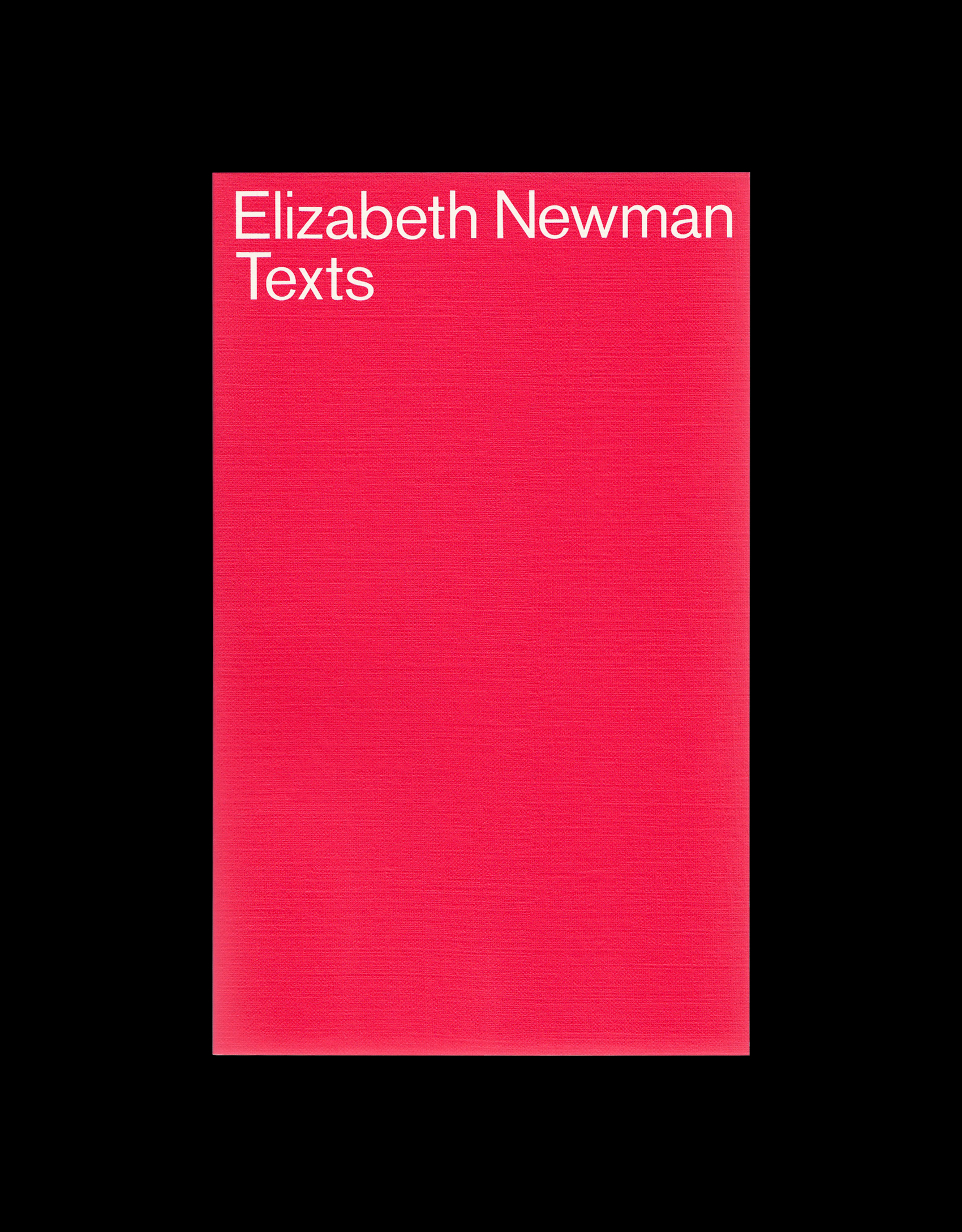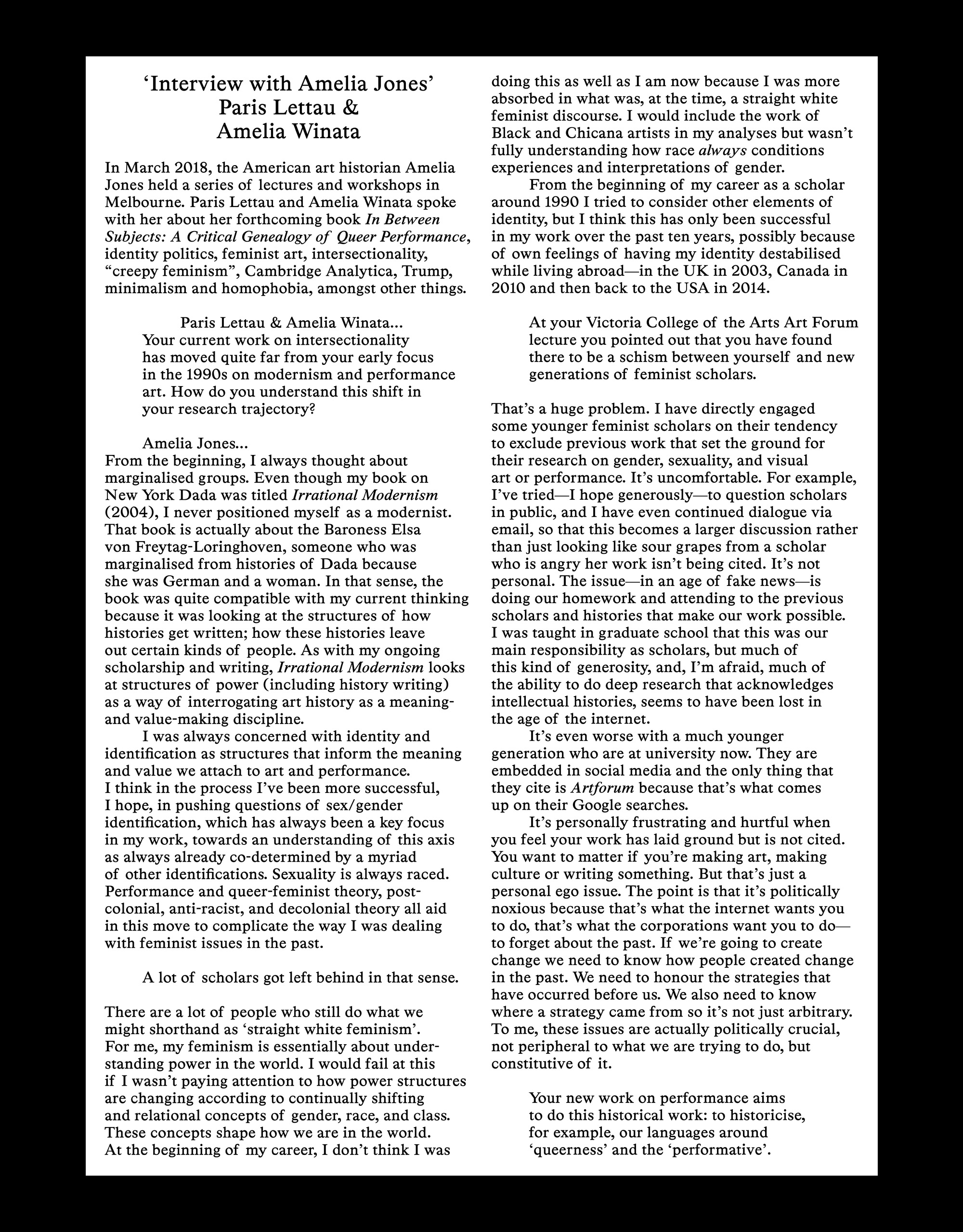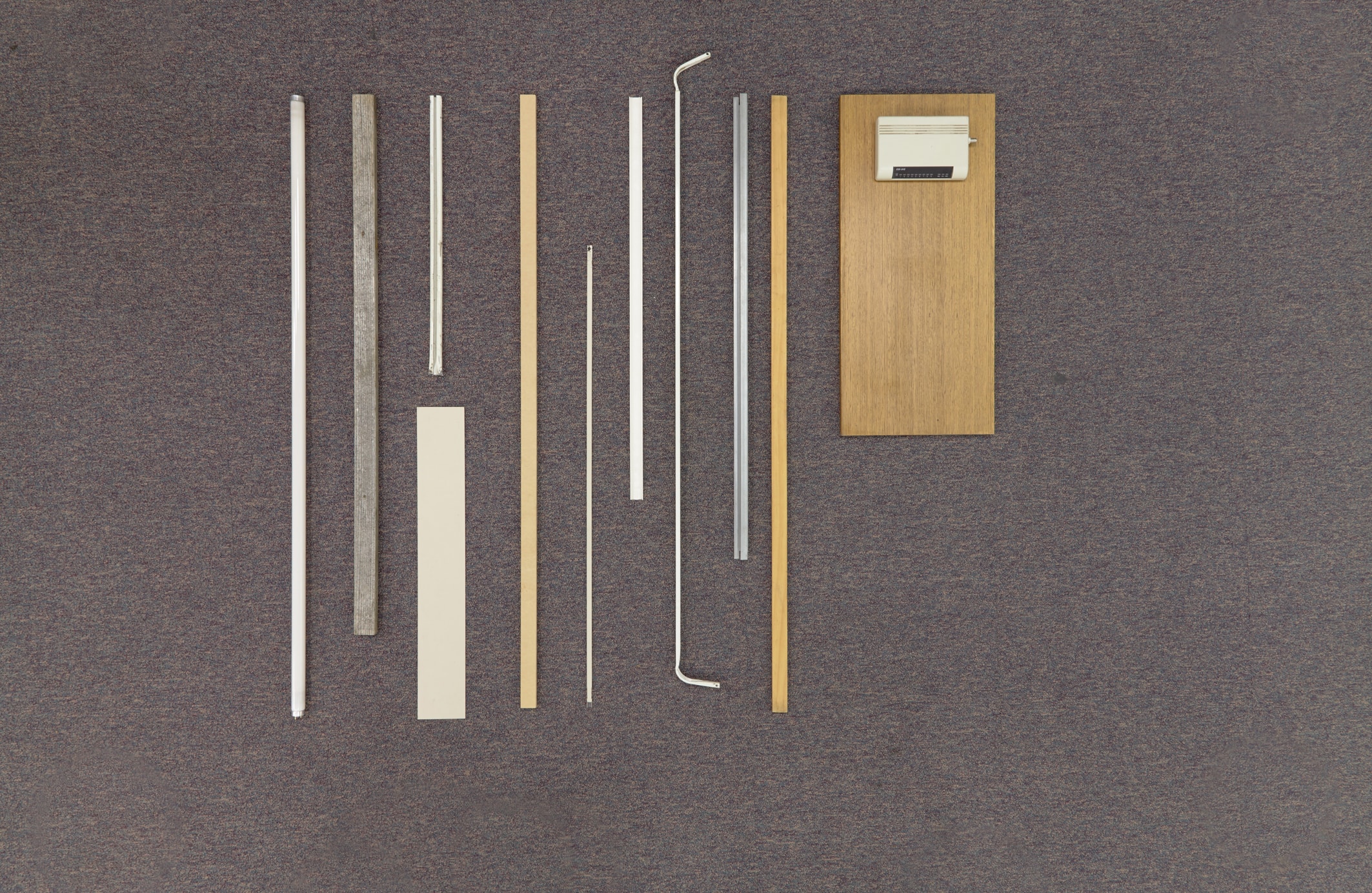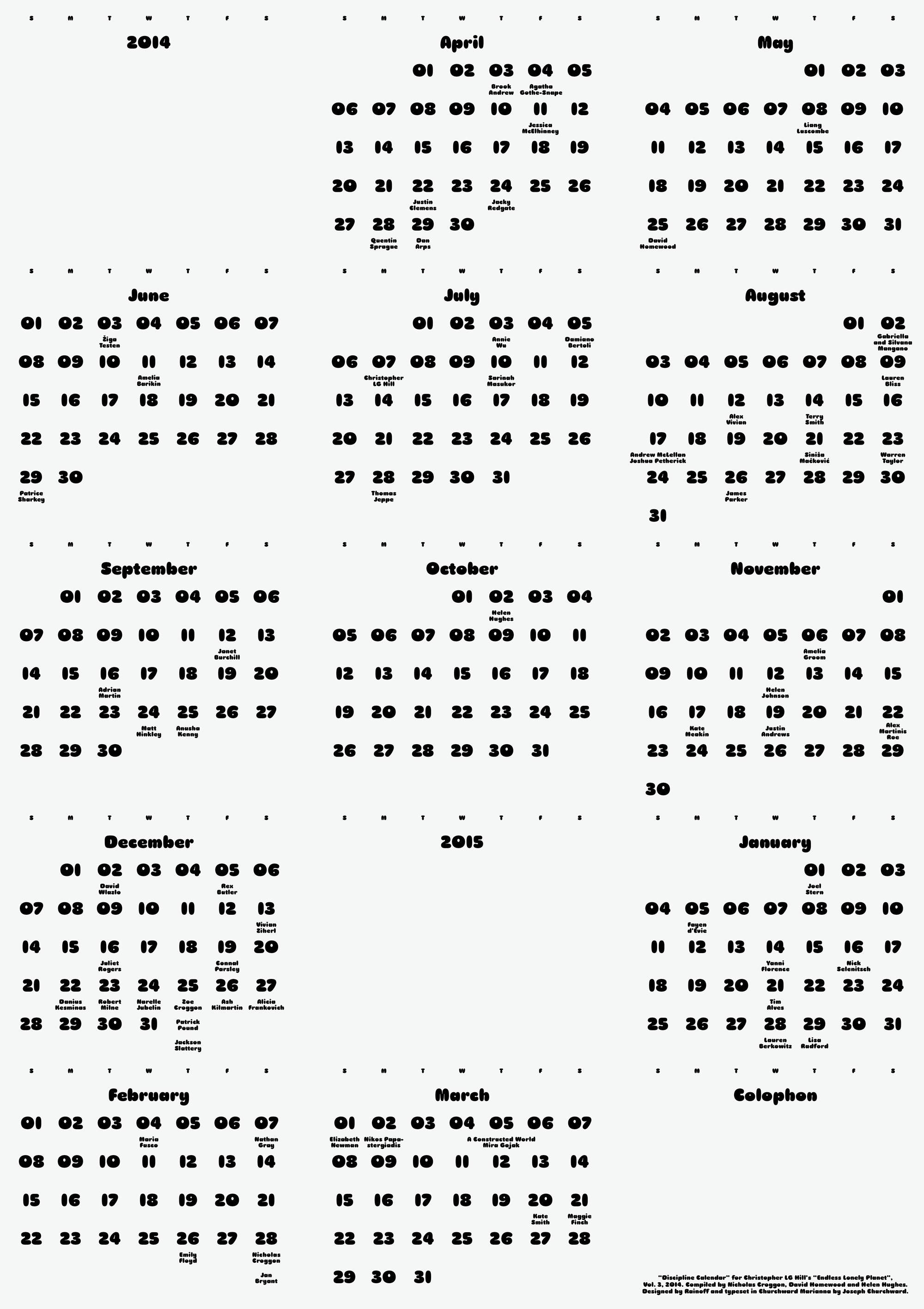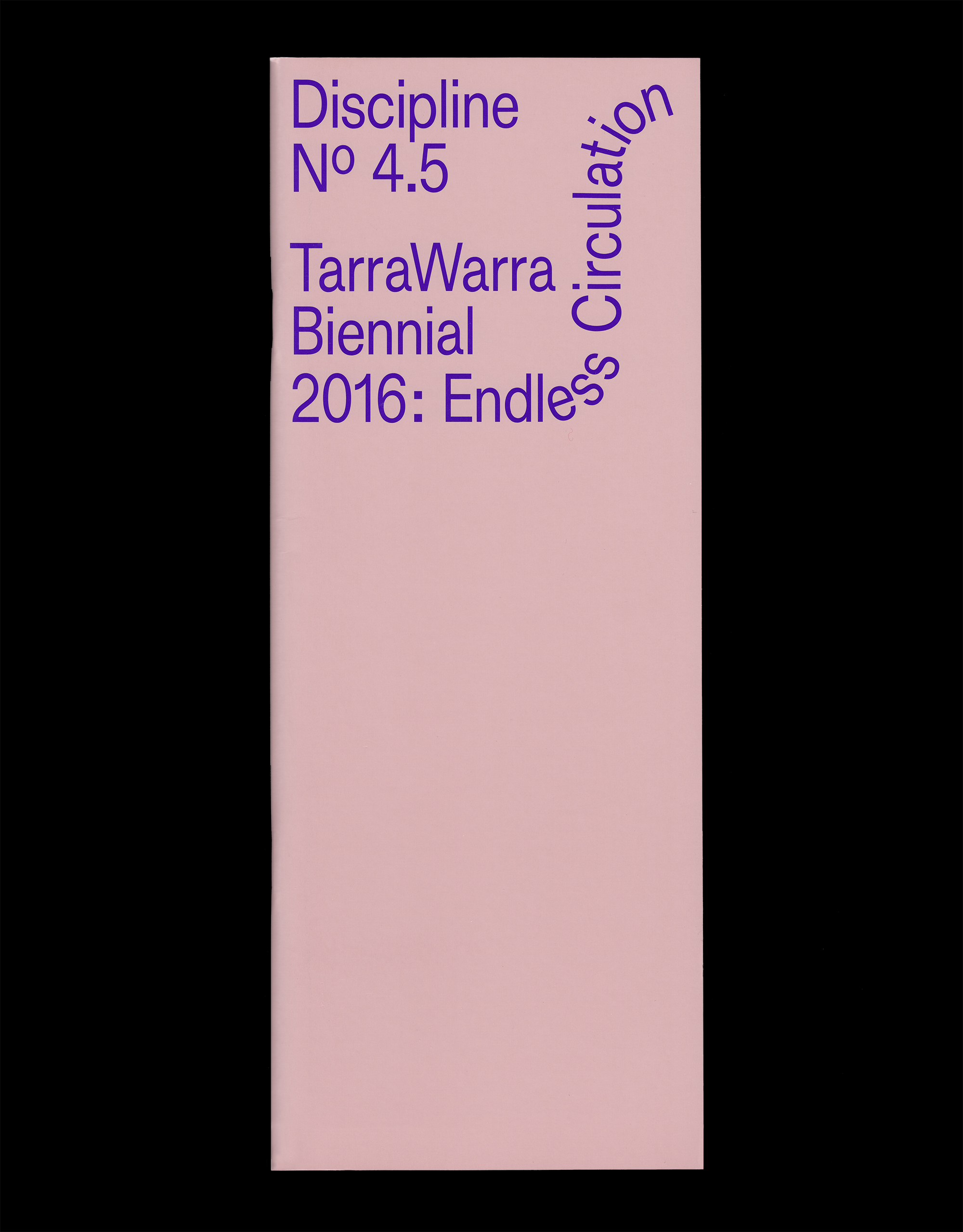Discipline No. 1
An Paenhuysen, Annie Wu, Ash Kilmartin, Ben Kinmont, Bianca Hester, Charlie Sofo, Christian Thompson, Connal Parsley, Damiano Bertoli, David Homewood, Fayen d’Evie, Francis Plagne, Graham Lambkin, Helen Hughes, Helen Johnson, Helen Johnson, Jackson Slattery, Jessica McElhinney, Joaquin Segura, John Nixon, Joshua Petherick, Liang Luscombe & Patrice Sharkey, Marco Fusinato, Matthew Collings, Matthew Griffin, Matthew Lutz-Kinoy, Michael Ashcroft, Mira Gojak, Nicholas Croggon, Nine Yamamoto-Masson, Pataphysics, Pat Foster and Jen Berean, Raafat Ishak, Rebecca Cleman, S.T. Lore, Sarinah Masukor, Slave Pianos, Sriwhana Spong, Stuart Ringholt, Thomas Jeppe, Tom Nicholson, Vivian Ziherl, Warren Taylor, Wolfgang Muller, and Yanni Florence
Discipline No. 2
A Constructed World, Adrian Martin, Alex Martinis Roe, Amelia Barikin, Annie Wu, Ash Keating, Bianca Hester, Callum Morton, Christopher LG Hill, Connal Parsley, David Homewood, Elizabeth Newman, Emanuele Coccia, Emily Floyd, Francis Plagne, Helen Hughes, Helen Johnson, James Parker, Janet Burchill, Jemima Wyman, John Berger, John Bevis, Kate Meakin, Kate Warren, Kimberley Dinosaur Tracks, Lip, Maria Fusco, Matt Hinkley, Mira Gojak, Moira Roth, Nicholas Croggon, Nikolaus Gansterer, Nikos Papastergiadis, Omer Fast, Paul Knight, Raquel Ormella, Regrette Etcetera, Robert Rooney, Rongsolo, S.T. Lore, Sandra Selig, Sarinah Masukor, Simon Klose, Simon Reynolds, Steve Salisbury, Terry Smith, Tim Alves, Timothy Morton, Vernon Ah Kee, Vivian Ziherl, Yukultji Napangati, Yve Lomax, and Žiga Testen
Discipline No. 3
A Constructed World, Adrian Martin, Alex Vivian, Alicia Frankovich, Anastasia Klose, Andrew McLellan, Angie Keefer, Annie Wu, Anusha Kenny, Ava Carrère, Brook Andrew, Claire Lambe, Dale Hickey, Dan Arps, David Homewood, David Wlazlo, Edith Scob, Elena Narbutaite, Gabriella Mangano and Silvana Mangano, Geoff Newton, Géraldine Longueville, Hany Armanious, Harriet Morgan, Helen Hughes, Helen Johnson, Huw Hallam, Ian Burn, Jan Bryant, Joel Stern, John Nixon, Joris Kritis and Julie Peeters, Juliet Rogers, Justin Andrews, Justin Clemens, Kate Smith, Lauren Berkowitz, Lauren Bliss, Lisa Radford, Maggie Finch, Mattin, Mark Geffriaud, Narelle Jubelin and Jacky Redgate, Nathan Gray, Nicholas Croggon, Nick Selenitsch, Nikos Papastergiadis, Nyapanyapa Yunupingu, Patrick Pound, Quentin Sprague, Raimundas Malašauskas, Rex Butler, Rob McLeish, Simryn Gill, S.T. Lore, Terry Smith, The Mulka Project, Valentina Desideri, Žiga Testen, and Zoë Croggon
Discipline No. 4
Michael Ascroft, Amelia Barikin, Gordon Bennett, Rex Butler, Prihatmoko ‘Moki’ Catur, Centre for Style, Angus Cerini, John Citizen, Fiona Connor, Nicholas Croggon, Juan Davila, A.D.S. Donaldson, Giles Fielke, Amelia Groom, Fabian Harb, David Homewood, Helen Hughes, Helen Johnson, Nuraini Juliastuti, KUNCI Cultural Studies Center, Bronté Lambert, Matthew Linde, Liang Luscombe, Ian McLean, Robert Milne, Elizabeth Newman, Hestu A. Nugroho (Setu Legi), Nikos Papastergiadis, Wendy Paramor, Francis Plagne, Satrio ‘Iyok’ Prayogo, Punkasila, Stuart Ringholt, Jon Roffe, Patrice Sharkey, Terry Smith, Simon Soon, Hito Steyerl, Amelia Sully, Syafiatudina, Ferdiansyah Thajib, Richard Tuohy, Kate Warren, Wok the Rock, and Danni Zuvela
Discipline No. 4.5
Clementine Edwards, Charles Green & Anthony Gardner, Fabian Harb, Helen Hughes, Chari Larsson, Astrid Lorange & Andrew Brooks, Victoria Lynn, Chris McAuliffe, Léuli Māzyār Luna‘i Eshrāghi, Robert Milne, Sarah Werkmeister, and Amelia Winata
Discipline, Más allá del fin
Discipline No. 5/Más allá del fin No. 3
Alexander Alberro, Nico Arze, Joaquín Bascopé, Richard Bell, María Berríos, Susan Best, Lucy Bleach, Clothilde Bullen, Rex Butler, Rebecca Carland, Nicholas Croggon, Juan Dávila, A. D. S. Donaldson, Juan Downey, Iris Duhn, Tessa Dwyer, Hana Earles, Jane Eckett, George Egerton-Warburton, Maggie Finch, Giuliana Furci, Sarita Gálvez, Carlos Garrido, Christy Gast, Macarena Gómez-Barris, Mary Graham, Aurelia Guo, Lola Greeno, Wiebke Gronemeyer, Melinda Hinkson, David Homewood, Helen Hughes, John Kean, Tessa Laird, Ursula K. Le Guin, Greg Lehman, Paris Lettau, Sarah Lloyd, Ramón Lobato, Zoë De Luca, Carla Macchiavello, Camila Marambio, Josefina de la Maza, Tara McDowell, Andrew McNamara, Patricia Messier Loncuante, Eric Michaels, Robert Milne, Denise Milstein, Hema’ny Molina, Kimberley Moulton, Stephen Muecke, Kevin Murray, Astrida Neimanis, Anna Parlane, Francis Plagne, Alison Pouliot, Jay Ruby, Carolina Saquel, Quentin Sprague, Lisa Stefanoff, Ann Stephen, Catalina Valdés, and Pip Wallis





